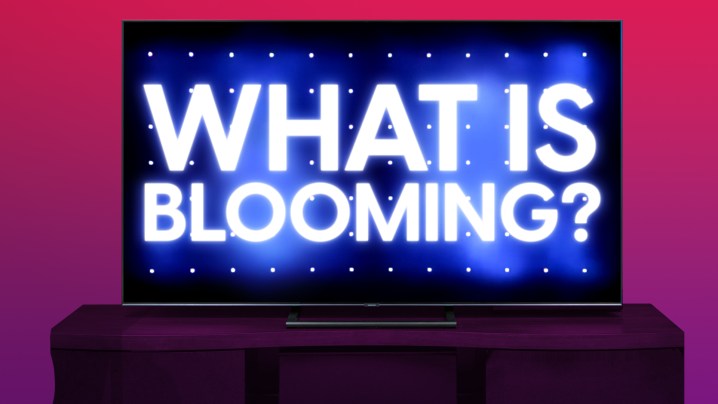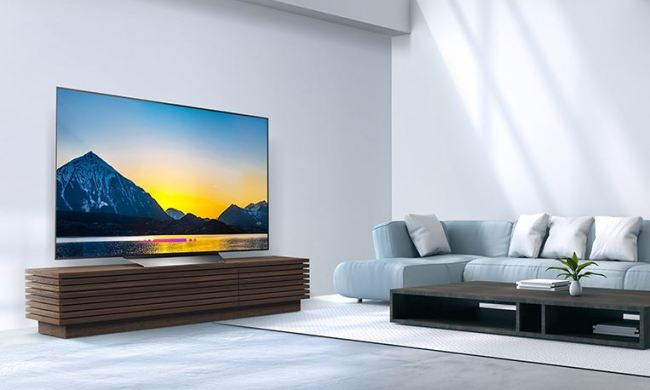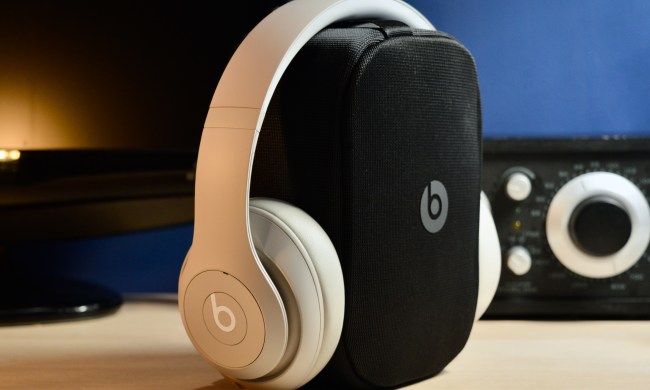
Ever heard someone mention an issue with blooming on their TV, or a noticeable halo effect on their monitor, and wondered what the heck they were referring to? You’ve come to the right place.
- Blooming and halo effect: What are they and is there a difference?
- Do all TVs and monitors experience the halo effect?
- Do I need to worry about the halo effect when buying a new TV or monitor?
- Is there anything I can do about blooming or halos if I notice them?
- Wait, I can see halos on my OLED display. Isn’t that impossible?
Blooming and halo effect are similar, but slightly different versions of the same phenomenon: visible brightness from the backlight that appears in places where you wouldn’t expect it, like parts of the image that are supposed to be black. It can theoretically happen on almost any TV or monitor that’s based on LCD panel technology.
Why does it happen and is there anything you can do about it? Here’s what you need to know.
Blooming and halo effect: What are they and is there a difference?

In the early days of LCD displays, compact fluorescent lights (CFL) were used as the backlight. They were thin and bright, but they lit the entire screen with the same level of brightness, making it hard to control contrast and black levels.
When LCD TVs and monitors transitioned from CFL backlights to LED technology (becoming known as LED TVs), small rows of LEDs were used on the edges (typically the top and bottom). LEDs provided more control, but in some scenes, they cast visible bright patches near the edges. It was especially noticeable when viewing letterboxed content (with horizontal black bars on the top and bottom of the screen). The edge-based LEDs tended to wash out those black bars, an effect that became known as blooming.

As LED backlight technology evolved, the LEDs began to occupy the entire space behind the screen — not just the edges. This array of LEDs were subdivided into zones, with each zone made up of multiple LEDs. This substantially increased control over brightness and location, and effectively eliminated blooming from the screen’s edges.
However, it introduced a new problem: Sometimes an individual zone was larger than the area of the screen that was intended to be brightly lit — like a candle’s flame, when seen against a dark or black background. You’d normally expect the edge of the flame to be where the brightness stops, but sometimes it continued outward, framing the flame in a soft halo of additional light — thus the term.
These days, the terms blooming and halo effect are used interchangeably.
Do all TVs and monitors experience the halo effect?

No. The halo effect is unique to displays that use transmissive screen technology — in other words, brightness is created by an independent backlight, which then passes through an LCD matrix and a color filter before reaching your eyes. LCD TVs, LED TVs, and QLED TVs are all examples of TVs (and
- Related: every TV type, explained
Transmissive displays exert control over brightness by dimming the backlight and using the LCD matrix to block any remaining light. Unfortunately, it’s not always perfectly effective. As we discussed above, if a backlight zone is too big or poorly controlled relative to the on-screen picture, light can and does leak through.
Emissive displays, like plasma, OLED, QD-OLED, and microLED, work differently. These technologies produce brightness at the pixel level, without the need for a separate backlight. Because these displays can always control exactly how much brightness exists, right down to the smallest possible detail, they never create a halo effect.
Do I need to worry about the halo effect when buying a new TV or monitor?

Even as recently as 2020, many transmissive-based TVs exhibited problems with blooming and halo effect, especially at the lowest end of the price spectrum. But there’s been a massive jump in backlight technology since then.
Backlights now routinely consist of thousands of tiny mini-LEDs, arranged in hundreds (or even thousands) of zones. The image-processing software has also improved greatly, allowing TVs to match the image on-screen with corresponding backlight zones with a high degree of precision and sync.
This improvement isn’t quite as accurate as you’ll get from emissive display TVs. But for most people, the differences are minor, and reports of blooming or halo effect have largely disappeared among owners of mid- to upper-range TV models.
Still, if you want absolute precision in brightness and contrast, with zero light bleed, emissive display technologies remain the best you can get.
Is there anything I can do about blooming or halos if I notice them?
Yes, but it may require some trade-offs. Since blooming/halo is produced when an LCD matrix is unable to block light coming from the display’s backlight, reducing the backlight’s maximum brightness can help. The less light that the backlight produces, the more effective the LCD’s light-blocking gets.
Check your TV or monitor’s settings. There’s often a low, medium, or high backlight brightness adjustment. Try moving it down one level to see if this improves your perception of light bleed.
The downside of doing this is that the display will have a harder time providing good contrast in well-lit rooms. You may need to dim you room’s lighting or cover windows to compensate.
Wait, I can see halos on my OLED display. Isn’t that impossible?

A true halo effect is caused by light bleed (which doesn’t happen on OLED displays), but that doesn’t mean you’ll never see things that look like the halo effect.
Highly compressed video typically produces artifacts — parts of the image that are blurry instead of crisp, or lacking in fine detail. Artifacts can also produce a smearing or “banding” of the image, where cleanly defined edges of objects become wider.
In the earlier candle flame example, video compression could cause the flame’s brightness to extend outward into the inky blackness behind it, often with a noticeable, blocky halo.
If this happens regularly, you may have a bandwidth problem (your internet connection isn’t fast enough for the material you’re viewing) or your streaming service might be experiencing unusually high demand. Most streaming services like Netflix automatically reduce the amount of data needed by increasing video compression when one or both of these situations occur.
It is highly unlikely that you will see compression-based halos when watching a movie from a Blu-ray player, or while playing a video game that doesn’t require an internet connection.



